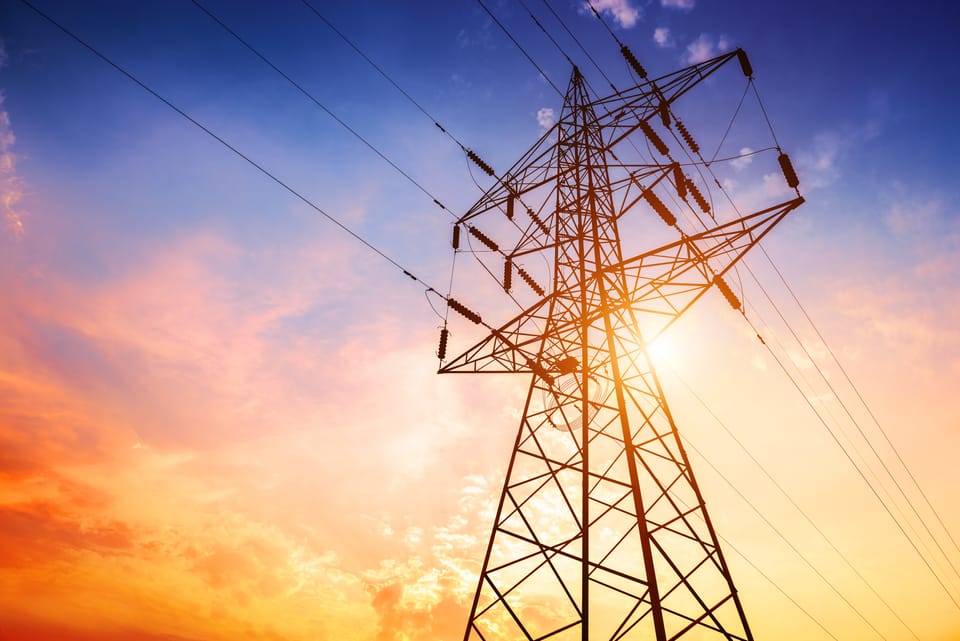Electricity demands fuel job growth

Can U.S. construction stay sustainable and competitive? Today we feature an interview with a congresswoman who reintroduced a sustainability bill that will affect construction if passed. But first: These solar plant construction workers uncovered a settlement from the Copper Age.
Here's a peek at what's in today's issue:
// Why experts project above-average growth in some construction jobs
// How to build more climate-resilient homes
// What you need to know about new OSHA PPE rules

'More jobs and more American-made innovation'
Last week, U.S. Congressmembers Valerie Foushee (D-NC) and Max Miller (R-OH) reintroduced the bipartisan IMPACT Act to advance low-carbon concrete production. The legislation previously passed the House unanimously under suspension of the rules in the last session of Congress; its bipartisan companion bill in the Senate is the Concrete & Asphalt Innovation Act.
Efforts to boost domestic concrete production are crucial as experts say the currently paused tariffs on Mexican and Canadian concrete and clinker could, when lifted, mean shortages and higher prices. The Level asked Rep. Foushee for more information on the bill and how it benefits the construction industry. -Margot Lester
Why did you and Rep. Miller reintroduce the IMPACT Act?
Concrete is the second most-used substance in the world after water. Advancing low-carbon concrete production here in the U.S. provides the opportunity to make meaningful, global emission reductions that will protect our planet and improve public health. We also have a chance to deliver domestic economic benefits by creating good-paying jobs and bolstering U.S. international competitiveness.
What else should construction company owners know?
U.S. producers can lead the world in innovation and meet the global demand for cement, concrete and asphalt production. The IMPACT Act will strengthen and enhance the competitiveness of American industry through the research and development of advanced technologies to improve the efficiency of cement, concrete and asphalt production.
Why is continued investment in green construction important?
Federal and industry investment in the development of sustainable building materials and production are critical toward reducing manufacturing costs and delivering meaningful environmental benefits. The IMPACT Act will help accelerate the commercialization of solutions that could eliminate nearly 8% of global carbon emissions from the cement industry, reinforcing U.S. leadership in developing these technologies and leading to more jobs and more American-made innovation in this sector.
Track the bill’s progress at congress.gov.

>> Who's that plumber? The Plumberlorian on Instagram. This fourth-generation plumbing contractor (who does a great job of hiding his true identity) celebrates blue-collar work and shares tips, funny memes and cogent commentary on his platform.
>> Go simple to go big. The latest installment of the Toolbox for the Trades podcast, "Simplifying operations for long-term growth.," features Chris Ramsay of ICE Heating, Cooling and Plumbing talking about technology, family matters and building a lasting business.
>> Electric work, done better. Tag along with Nebraska-based electrical contractor Trevor Ottmann, The Everyday Electrician, as he marvels at (and repairs) terrible wiring decisions, installs new fixtures and deals with other aspects of life as an independent business owner.
>> Trenchless techniques and more. The NASTT No-Dig Show (Mar. 30-Apr. 3, Denver) is the conference for underground utility installers, repairers and maintainers, focusing on trenchless techniques, products and services.
>> Just for fun: Oh my stars! Take a break and gaze upon the breathtaking images of the night sky captured by astrophotographer Matt C. Jackson.

Demand Drivers: Electricity demands fuel job growth
The construction industry is projected to grow 4.7% from 2023 to 2033, faster than the 4 % projected for all industries, according to a new U.S. Bureau of Labor Statistics report. Three factors fuel the increase:
- Expanding electricity capacity
- Continuing third for data and AI-driven technology
- Rising need for EV charging infrastructure
These trends create outsized need for certain construction occupations. The highest growth will be for solar photovoltaic installers, which the BLS estimates will rise 48% over the decade. Other occupations with above-average growth through 2033 include:
- Construction laborers: 8.2%
- Electrical and wiring contractors: 6.6%
- Plumbing, heating and air conditioning contractors: 6%
- Electric power line installers and repairers: 7.6%
- Specialty trade contractors: 5.5%
Why it matters: Meeting the current need for construction services is already a challenge in many sectors and regions. The future market for workers makes it even more important to invest in recruitment, training and retention efforts now—especially for those in high-demand occupations. (Bureau of Labor Statistics)

>> Trade Troubles: Uncertainty continues despite tariff pause
>> Building Blocks: Skanska program helps small firms grow
>> Firm Focus: Contractors push sustainability despite presidential rants
>> Multifamily Mojo: Developers somewhat hopeful

Weather Watch: Keys to climate-resilient housing
March is the beginning of severe weather season, and many states hold awareness and preparedness campaigns this month. Homebuilders can help. Here are some strategies for constructing houses that are more resistant and resilient to severe weather:
- Wind and fire-resistant roof design, materials and construction in all locations
- Water management and flood protection, including sealed envelopes and foundations and flood-resistant windows and doors
- Solid structural systems, like continuous load paths and foundations reinforced with reliable shear walls and metal connectors
- Sustainable energy infrastructure, such as underground electrical lines
- Future-proofed construction practices that evolve with changing hazards and climate change
Why it matters: The trend lines show that the frequency and severity of extreme weather events are increasing. Creating structures that perform better in these conditions is crucial. (Unsustainable)

PPE Policy: New rules require better-fitting gear
OSHA’s mandate requiring employers to provide every employee with properly fitting construction PPE took effect earlier this year. The new rule aims to avoid hazards to employees from ill-fitting gear, which has long been an issue for crew members who are outside the one-size-fits-all standard. For example:
- Masks that are too big allow particulate matter to be breathed in
- Gloves that don’t fit can fall off, restrict circulation and impair dexterity
- Harnesses that are too small limit movement; when they’re too loose, workers can slip out
Why it matters: PPE that doesn’t fit correctly doesn’t protect and can lead to injuries and death. While the price of correctly sized gear may be higher, it’s less than the cost of lost productivity, increased insurance premiums and potential liability lawsuits. (SmartBrief)

- Respond right. Get the latest on OSHA's emergency response requirements in this free Timeout for Safety Webinar from N.C. State University's Industry Expansion Solutions program. (Mar. 17)
- Build a better back office. Tune into this Construction Executive webinar for specialty contractors to improve operational efficiency and streamline processes so your business is more profitable. (Mar. 26)
- Deal with disruption. Download Gartner's guide to mitigating supply chain disruption from tariffs and other factors.
Thanks for reading today's edition! You can reach the newsletter team at thelevel@mynewsletter.co. We enjoy hearing from you.
Interested in advertising? Email us at newslettersales@mvfglobal.com
Was this email forwarded to you? Sign up here to get this newsletter once a week.
The Level is written by Margot Lester and edited by Katie Parsons.





